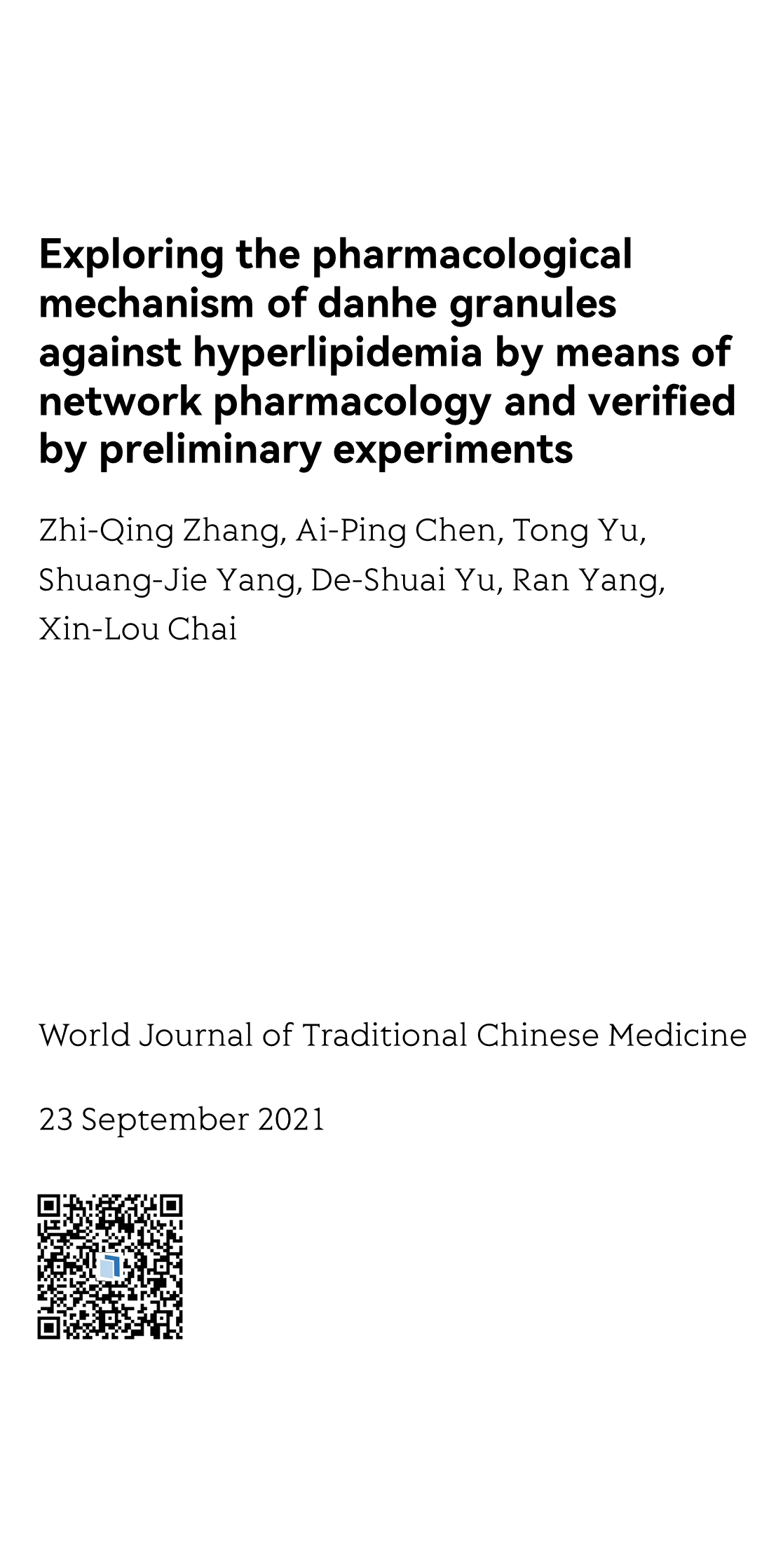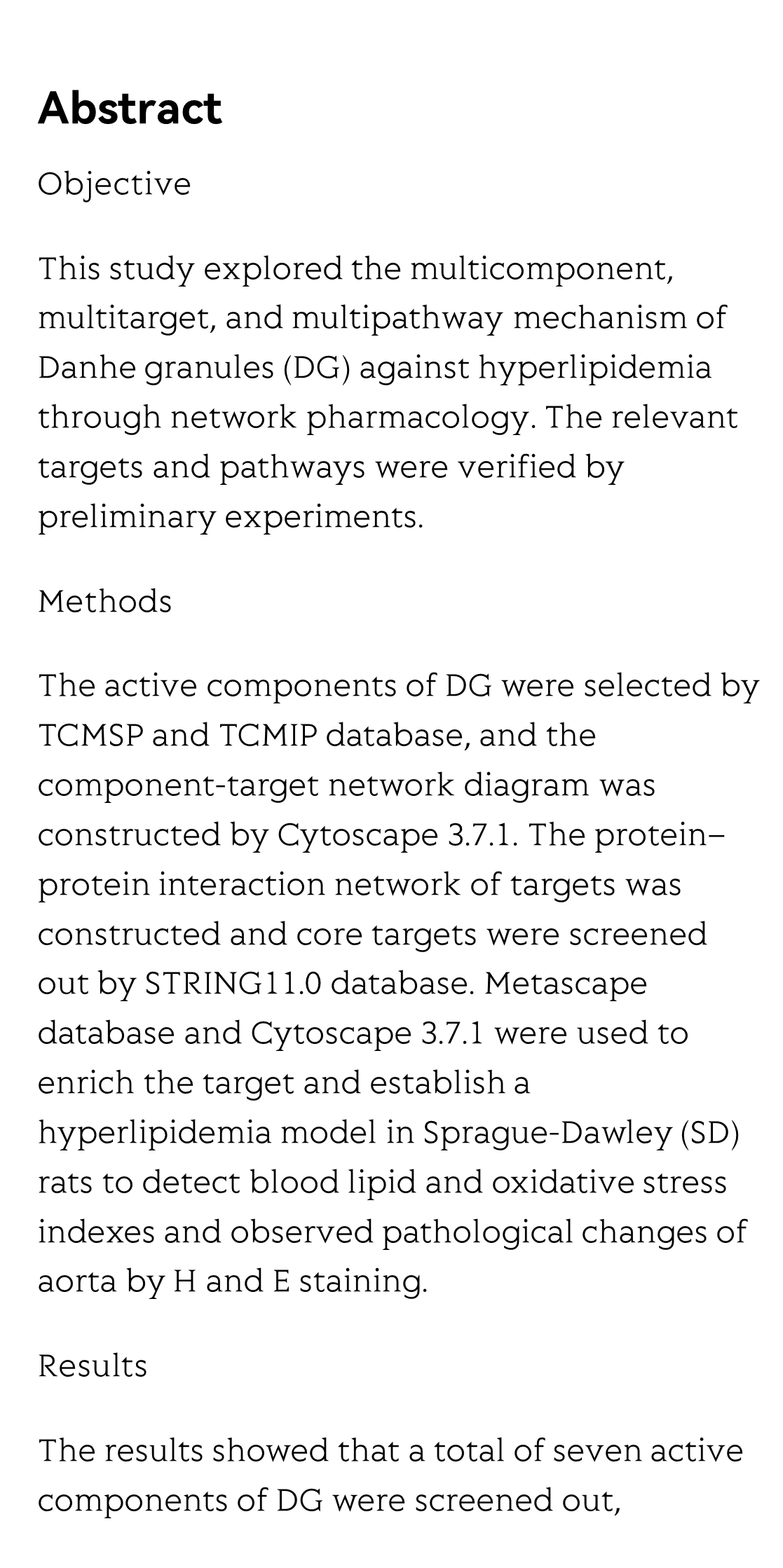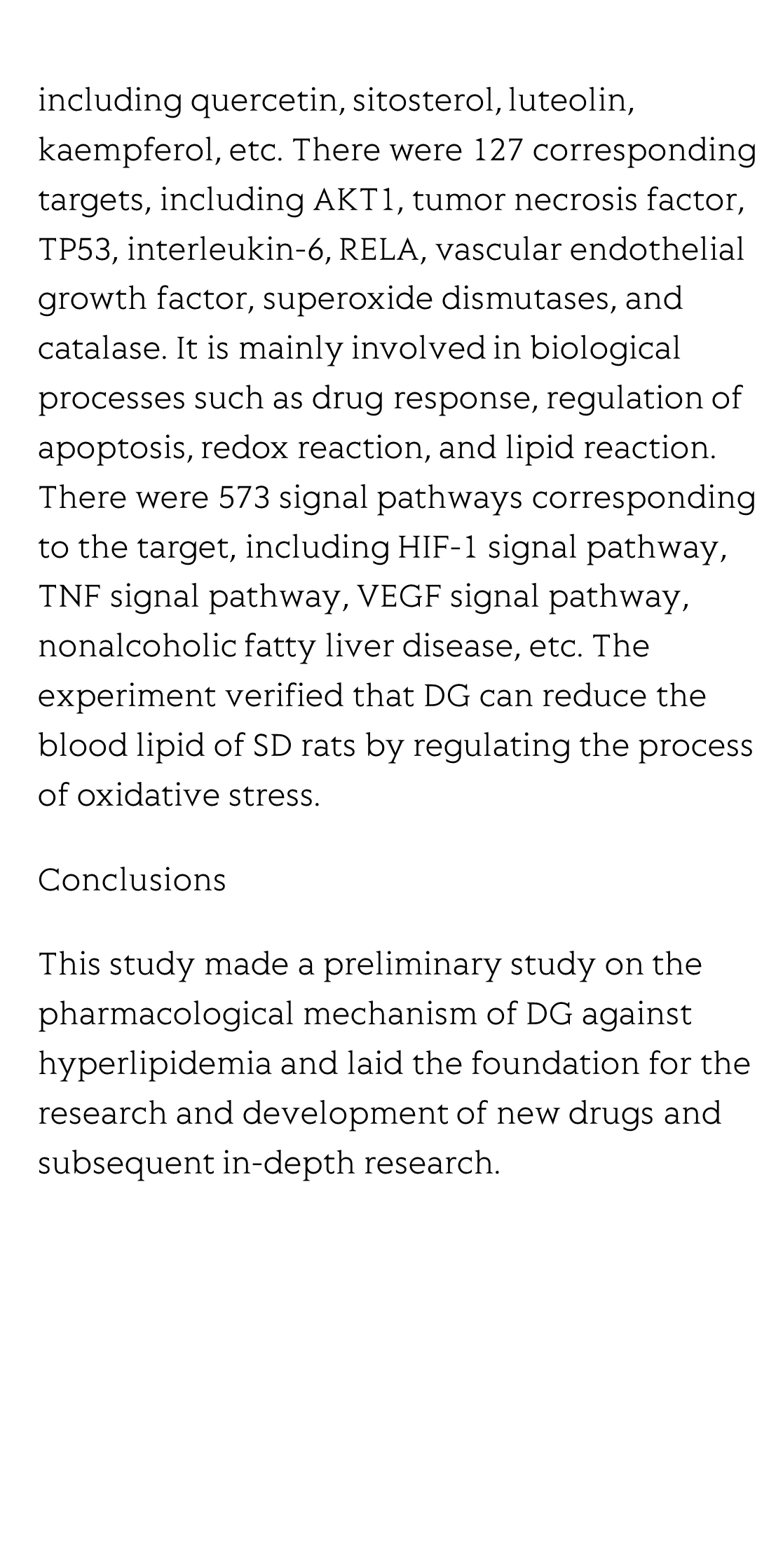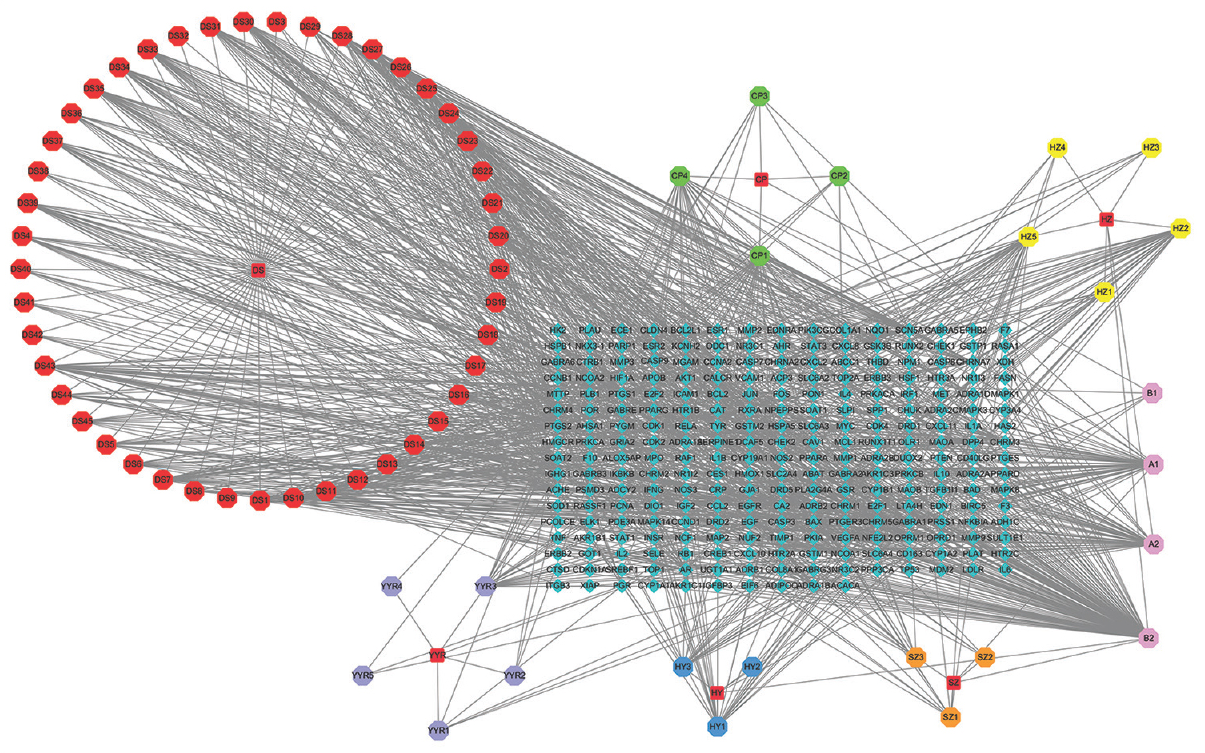(Peer-Reviewed) Exploring the pharmacological mechanism of danhe granules against hyperlipidemia by means of network pharmacology and verified by preliminary experiments
Zhi-Qing Zhang 张志清 ¹, Ai-Ping Chen ¹, Tong Yu 于彤 ¹, Shuang-Jie Yang 杨双杰 ¹, De-Shuai Yu 俞德帅 ², Ran Yang 杨然 ³, Xin-Lou Chai 柴欣楼 ¹
¹ School of Traditional Chinese Medicine, Beijing University of Chinese Medicine, Beijing, China
中国 北京 北京中医药大学中医学院
² Dongzhimen Hospital, Beijing University of Chinese Medicine, Beijing, China
中国 北京 北京中医药大学东直门医院
³ Department of Cardiology, Guang'anmen Hospital, China Academy of Chinese Medical Sciences, Beijing, China
中国 北京 中国中医科学院广安门医院 心血管内科
Objective
This study explored the multicomponent, multitarget, and multipathway mechanism of Danhe granules (DG) against hyperlipidemia through network pharmacology. The relevant targets and pathways were verified by preliminary experiments.
Methods
The active components of DG were selected by TCMSP and TCMIP database, and the component-target network diagram was constructed by Cytoscape 3.7.1. The protein–protein interaction network of targets was constructed and core targets were screened out by STRING11.0 database. Metascape database and Cytoscape 3.7.1 were used to enrich the target and establish a hyperlipidemia model in Sprague-Dawley (SD) rats to detect blood lipid and oxidative stress indexes and observed pathological changes of aorta by H and E staining.
Results
The results showed that a total of seven active components of DG were screened out, including quercetin, sitosterol, luteolin, kaempferol, etc. There were 127 corresponding targets, including AKT1, tumor necrosis factor, TP53, interleukin-6, RELA, vascular endothelial growth factor, superoxide dismutases, and catalase. It is mainly involved in biological processes such as drug response, regulation of apoptosis, redox reaction, and lipid reaction. There were 573 signal pathways corresponding to the target, including HIF-1 signal pathway, TNF signal pathway, VEGF signal pathway, nonalcoholic fatty liver disease, etc. The experiment verified that DG can reduce the blood lipid of SD rats by regulating the process of oxidative stress.
Conclusions
This study made a preliminary study on the pharmacological mechanism of DG against hyperlipidemia and laid the foundation for the research and development of new drugs and subsequent in-depth research.
Meta-lens digital image correlation
Zhou Zhao, Xiaoyuan Liu, Yu Ji, Yukun Zhang, Yong Chen, Zhendong Luo, Yuzhou Song, Zihan Geng, Takuo Tanaka, Fei Qi, Shengxian Shi, Mu Ku Chen
Opto-Electronic Advances
2025-07-29
Broadband ultrasound generator over fiber-optic tip for in vivo emotional stress modulation
Jiapu Li, Xinghua Liu, Zhuohua Xiao, Shengjiang Yang, Zhanfei Li, Xin Gui, Meng Shen, He Jiang, Xuelei Fu, Yiming Wang, Song Gong, Tuan Guo, Zhengying Li
Opto-Electronic Science
2025-07-25
Review for wireless communication technology based on digital encoding metasurfaces
Haojie Zhan, Manna Gu, Ying Tian, Huizhen Feng, Mingmin Zhu, Haomiao Zhou, Yongxing Jin, Ying Tang, Chenxia Li, Bo Fang, Zhi Hong, Xufeng Jing, Le Wang
Opto-Electronic Advances
2025-07-17







